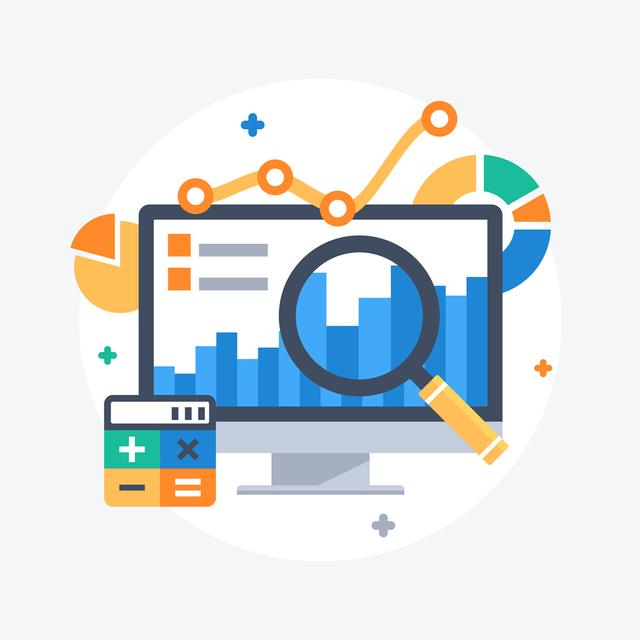Have you ever heard the phrase, “what gets measured, gets managed?” For years, this quote has been passed down through generations of business people like a gospel. This sentiment still holds true even in the technology dominated world that we live in today.
The best way to understand and improve your SEO is by first tracking it. When reviewed properly and frequently, these metrics can give you the insight to transform your business and build a deeper understanding of your online presence.
Organic Traffic
Organic traffic consists of the total number of unsolicited visitors to your site coming from search engines (such as Google, Bing, Yahoo etc).
Organic traffic is an important metric for SEO since it quantifies the traffic to your site from search engines and establishes a baseline to improve upon.
High organic traffic volume can be a positive indication that your efforts to improve SEO are paying off. On the other hand, a lower volume could indicate that there are areas that have room for improvement.
Bounce rate
Bounce rate is the percentage of visitors that arrived on your site and then left without any additional interaction other than the action they took to leave your site (e.g. clicking an external link, or the back button).
This multifaceted metric gives you insight on the quality of both your content and the traffic landing on your site, and can help in uncovering issues with the content you’re providing.
A high bounce rate could mean:
- Visitors coming to your site aren’t finding what they’re looking for
- Visitors are consuming content and leaving (i.e. reading a blog and choosing not to browse further)
Tracking individual page analytics will help you identify which pages your users are bouncing from the most, and then investigate the reason that they’re leaving.
Conversion Rate
Conversion rate is the number of visitors that performed a goal completion divided by the number of total visitors. A goal completion can include any of these example actions:
- Sales purchase of a product or service
- Downloading a checklist or infographic
- Subscribing to a newsletter
- Submitting a form
- Clicking on a phone link
- Clicking on an email link
Conversion rate is a strong indication of the quality of traffic coming to your site. It allows you to benchmark the performance of certain types of pages on your site and a valuable way to track and manage measurable goals (e.g. setting a sales goal with a 5% conversion rate on a specific products or services page).
Click Through Rate (CTR)
The CTR is calculated by taking the total number of people who clicked on an organic listing or advertisement (via search engine) to visit your site divided by the total number of people who saw your organic listing or advertisement (impressions).
CTR’s show valuable insight for your page when it comes to:
- Title tag relevance to a user’s search query
- Meta description relevance to a user’s search query
- Schema markup relevance to user’s search query
When you can provide clearly relevant content to your visitors, a high CTR can often result. Tracking this allows you to identify when adjustments to your messaging or strategy may be necessary.
Average Session Duration
This is calculated by taking the average period of time (duration) a visitor on your site spends browsing in a single session (from entrance to last page load).
While limitations exist for this metric, average session duration can still provide useful insight on your visitor engagement level.
- Are users finding your content to be relevant and worthy of their time?
- Which pages hold visitors' attention the longest?
- Does your content have areas that need improvement? (relevance and quality)
Percentage of New Sessions
This metric is the number of new users to your site versus the number or returning users.
Percentage of new sessions can help you determine:
- If you’re attracting new users to your site
- If new marketing efforts or campaigns are effective in driving new visitors to your site
Keyword Ranking
This refers to your website’s organic listing position on a search engine results page (SERP) for specific keywords, phrases and topics (search queries/terms).
The higher you rank for relevant search queries on the SERP, the more visibility your listing will receive. And with higher visibility comes a higher chance for you to help users searching for answers or solutions to their problems.
Site Speed
Page speed is the amount of time that it takes for a web page to load. Similarly, site speed is the mean loading time between select pages on your site which gives you an average site speed.
Page speed is a factor that directly impacts your sites bounce rate and conversion rate. Users browsing the web have the freedom to navigate anywhere they please. The slower a page loads the more likely your traffic is to navigate away before your content is even presented to them. Don’t needlessly lose visitors or business simply due to high wait times.
Refining your SEO Practices
Since none of these metrics individually give you a complete picture, it’s important to take a holistic approach. They should be used in conjunction with one another to help you get the clearest picture of your site traffic and user interaction with content.
Monitoring and managing these key metrics can prove to be a critical tool to help expand your business and gain new customers. These metrics allow you to fine tune your web presence to attract additional business and make well-informed decisions regarding SEO techniques.

